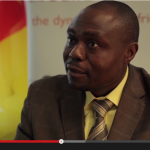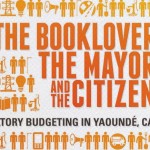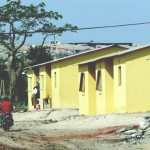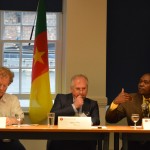![Local Participatory Budget meeting in Yaounde [PHOTO: World Habitat Awards]](http://www.africaresearchinstitute.org/newsite/wp-content/uploads/2014/05/PBCameroon.jpg)
Local Participatory Budget meeting in Yaounde [PHOTO: World Habitat Awards]
1. What is participatory budgeting?
Participatory budgeting (PB) involves local authorities and residents co-operating to determine the allocation of public money. Its primary objective is to provide an opportunity for citizens to influence decisions about the provision and location of services in the areas they live.
2. What are the origins of PB?
PB was first practised in Brazil. When two decades of military dictatorship came to an end in the 1980s, the finances of Brazilian cities were in a dire state. In Porto Alegre, the Workers’ Party, in collaboration with civil society organisations, devised PB as a means of making the best use of scant resources while also fulfilling a pledge to ensure effective participation in local government by the poor and disadvantaged.
3. How has PB developed in Cameroon?
Since its introduction to Cameroon in the mid-2000s, PB has made steady progress. In the municipalities that have adopted PB, residents meet to agree on the most pressing priorities in their neighbourhoods. Elected representatives then present their communities’ proposals to the mayor in a competitive public forum. Limited funds mean that only some projects are successful. However, the process is designed to ensure that community members have an opportunity to voice their opinions at all stages.
4. What is distinctive about PB?
An important principle of PB is that communities must themselves contribute – whether in cash, manpower, materials or land – in order to promote a sense of ownership of new projects or assets.
Also read: The booklovers, the mayors, and the citizens; participatory budgeting in Yaounde, Cameroon
5. How much money is typically made available for PB?
The proportion of the total municipal budget made available through PB for discretionary expenditure on small public works is typically 2–10%.
6. What types of projects are funded?
Projects selected by communities might include wells and standpipes, sanitation and sewerage works, street lighting, paving and roads, or housing.
7. What are the benefits?
PB allows citizens to press for better access to basic services and participate in the decisions that have a tangible impact on their lives. It can enhance transparency, combat corruption and improve tax collection. In addition, PB offers local government leaders an opportunity to increase the impact of very limited financial resources by aligning policy-making with local needs.
8. What are the limitations of PB?
Although often depicted as a shining example of the merits of “grassroots democracy”, PB is not a developmental “silver bullet”. As Cameroon does not have a tradition of participation and mayors have for the most part been reticent or obstructive, implementing PB in the country has been incredibly difficult. The success of individual projects depends on the motives of those involved, literacy rates and whether there is genuine collaboration, among a range of other factors.
Also read the full paper for details of how citizens, civil society and local officials collaborated to establish participatory budgeting in Yaoundé, Cameroon
![]()
Download 8 things you should know about participatory budgeting (in PDF)












